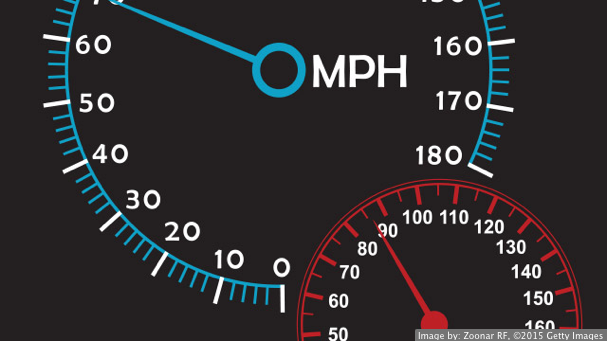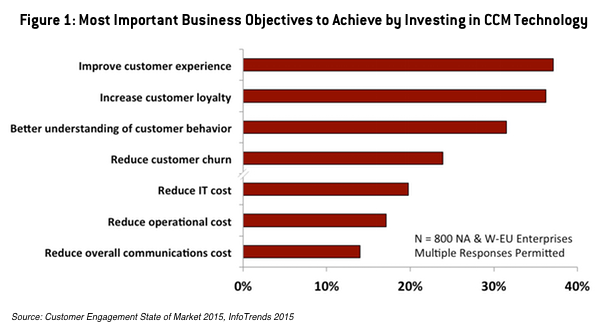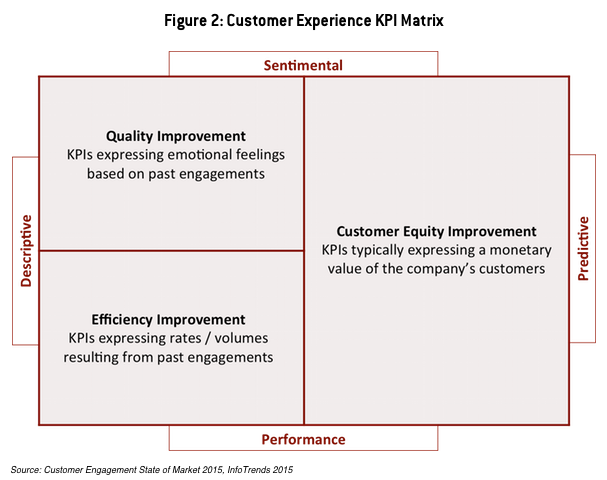
Improving customer experience is a key priority for enterprises today. To improve something, you need to have the ability to measure it. Based on your objective, measurement methodologies for customer experience can differ significantly. To steer toward your strategic customer communications management (CCM) objectives, it is important to understand these differences.
In our research in the field of customer communications, we observe a shift in strategy that is moving from a cost-driven strategy toward a customer-centric one. Enterprises today talk about the importance of customer engagement and the need to improve customer experiences. They acknowledge that markets are moving from a “sales era,” which focused on overcoming customer resistance and convincing people to buy their products and services, toward a “social era,” where customers rely more on peer recommendations than on messages from brands themselves.
When asked for the most important business objectives they wish to achieve by investing in CCM technology, the top responses from enterprises were improving customer experiences and loyalty. Objectives such as cost reduction, reducing strain on information technology (IT) or regulatory compliance are secondary priorities for most enterprises today. This would have been the other way around several years ago.
In our research in the field of customer communications, we observe a shift in strategy that is moving from a cost-driven strategy toward a customer-centric one. Enterprises today talk about the importance of customer engagement and the need to improve customer experiences. They acknowledge that markets are moving from a “sales era,” which focused on overcoming customer resistance and convincing people to buy their products and services, toward a “social era,” where customers rely more on peer recommendations than on messages from brands themselves.
When asked for the most important business objectives they wish to achieve by investing in CCM technology, the top responses from enterprises were improving customer experiences and loyalty. Objectives such as cost reduction, reducing strain on information technology (IT) or regulatory compliance are secondary priorities for most enterprises today. This would have been the other way around several years ago.

To improve something, you must first control it. To control something, you must understand it and have the ability to measure it. This wisdom also holds for improving customer experiences. First, let’s understand what we are talking about and get the terminology straight. In the context of customer communications, we define customer engagement as the act of interaction between an organization and its customers. As a result of this, the business provides an experience and builds a customer relationship. Customer experience is a short- to mid-term emotional perception of an engagement’s performance level—in other words, how customers perceive the interactions. The net result of all customer experiences over the lifetime of the customer’s relationship with the organization (long term) is what determines customer satisfaction. Thus, by focusing on improving customer engagements, enterprises will start improving customer experiences and, ultimately, customer satisfaction.
We can divide key performance indicators (KPIs) for customer experiences into two main dimensions. The first dimension describes the type of data it is expressing. Data can express sentiments (e.g., emotions such as happiness or anger) that are unique for each individual customer. On the other end of the scale, data can be operational in nature, such as the number of website visits or traffic/volume at help desks. The second dimension describes if the KPI represents data that expresses a current state (descriptive) or describes a future state (predictive). To determine predictive data, statistical models and data-mining techniques are applied using existing data. By combining these two dimensions, we can chart a two-by-two matrix, as illustrated in Figure 2.

Through this matrix, we can identify three categories of KPIs. Each category addresses a specific aspect of customer experience and allows enterprises to gain more insight into that aspect to improve it:
- KPIs for improving the quality aspect of customer experiences: typical KPIs in this category are the Customer Satisfaction Index (CSI), Net Promotor Score (NPS), SERVQUAL/Rater and the Kano model.
- KPIs for improving the efficiency aspect of customer experiences: KPIs in this category measure operational data, such as the number of web visits, customer retention rates and conversion rates.
- KPIs used to typically improve customer equity of organizations as a result of customer experiences: Customer equity is defined as the sum of all lifetime values from the company’s customers. A Customer Lifetime Value (CLV) expresses the net present value of future cash flows. As such, it is a predictive KPI. Other predictive KPIs could include the percentage of customers that will renew their contract or will respond to certain types of messaging.
Enterprises should know which KPIs to select for improving customer experiences and which to ignore. The insights provided by these categories can be used to address issues of different stakeholders. For example, when discussing funding for a customer communications project to improve customer experiences, using the customer equity KPI to prove return on investment makes the most sense, whereas quality- or efficiency-focused KPIs would make more sense when improving customer experiences at the point of a help desk.
David Stabel is an associate director for InfoTrends’ customer engagement technologies advisory service. For more information on InfoTrends’ customer engagement technologies advisory service, visit www.infotrends.com. Follow him on Twitter @davidstabel.
David Stabel is an associate director for InfoTrends’ customer engagement technologies advisory service. For more information on InfoTrends’ customer engagement technologies advisory service, visit www.infotrends.com. Follow him on Twitter @davidstabel.







